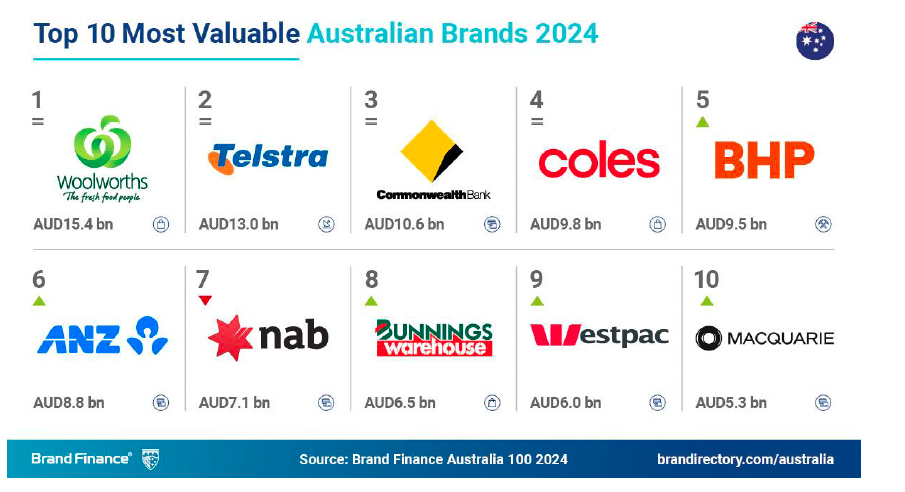Omnichannel flip, CRM overhaul powers housebuilder Metricon back from brink: Leads soar, costs tumble, channels to footfall mapped; Trade Desk’s Bayes says multichannel holdouts ‘crazy’

Angela Purdy spent nine years at Nissan before joining homebuilder Metricon in late 2020. She flipped from an automotive industry unable to get product into the country and a workforce burning long-service leave to ride out pandemic-crunched supply chains, to an over-stimulated building industry running so hot it couldn’t keep up with demand.
It was easy, pure demand harvesting.
That was about to come full circle. Metricon survived by the skin of its teeth, thousands of building firms went bust, including big names.
The industry’s subsequent collapse is well documented. Materials and labour costs rocketed. Firms could no longer honour customer contracts. Selling prices locked-in 12 months out guaranteed major losses.
Metricon secured support to remain solvent. Then it had to rebuild market confidence and demand and start reconstructing a customer and marketing engine that could no longer afford inefficiency and data blindness.
Credit to the Starcom team – they had been wanting to do this [shift to omnichannel] for quite some time, but we were in the throes of investing in a better CRM system. We had a very archaic one … we just had no way of safely passing on customer data and it put us at too high risk, with the Privacy Act and the fines you get these days.
Rigour, mortis
Compared to Nissan, rich in data, insight and market mix models, “I wouldn’t say there was a lot of [data] rigour when I came on board [at Metricon],” said Purdy. “You spend millions of dollars to get data in automotive. The building industry was … more of a traditional setting.”
While the boom lasted, that didn’t matter.
“We couldn’t keep up with enquiries. [Government] had doubled the first time homebuyer grant, land was still affordable. It was just harvesting, getting through the volume. If anything, there was a lot left on the table, because we couldn’t keep up.”
In 2022 the bubble burst. Grants were pared and input costs soared just as interest rates pumped and the affordability crisis cranked through the gears. “It was a perfect storm … and it hit hard,” says Purdy. “A lot of big construction firms like Porter Davis went under and Metricon had to turn around the business to stay afloat.”
A tsunami of liquidations made headlines, leaving the industry’s brand and that of its major players tarnished. “There was a lot of negative coverage. We had a big job to do,” Purdy acknowledges.
“Part of that was a $40 million turnaround statement to the market – ‘we’ve cleaned up our pipeline, we’re servicing and building fantastic homes again’.
“I also had a commitment from the business that budgets were not moving – and that they would remain the same to drive the brand, and that even in the toughest times, we needed to keep propelling not only our brand but our offers.”
But the market remained deeply nervous.
“Nobody was in a rush to act. Consumer confidence was heading towards all-time lows. Nobody knew what was going to happen with interest rates. At the same time, Victorian established real estate was starting to flatten out – and in a sense that is our biggest competitor. When real estate prices flatten, consumers start to question ‘am I going to go through the hassle of building a new home, or should I just start shopping established real estate?’”
Metricon and Purdy had their work cut out.
So she hatched a plan with Starcom and The Trade Desk to get more Nissan-like with data. But that first required a CRM overhaul. The old system was creaking and posed a data transfer risk. There was no way to safely take the data and match it to the Trade Desk’s UID2 identifier and then use it for sharper targeting and reporting.
Not only do I have to deliver for Metricon, I have to deliver for 18 individual supplier partners – that’s the complexity of this campaign. They want to see the volume come through the door … It’s a lot of pressure to deliver both for yourself but for also all the supplier partners involved.
Double duty x 18
The lack of sophistication was posing challenges. Metricon aims to deliver brand and performance in a single hit – but it’s also doing the same job for 18 suppliers in Victoria alone, which co-fund major campaigns and want to see returns.
There’s little supplier crossover between states, which means across the federated business, there were some significant reporting gaps in terms of hitting both Metricon’s own KPIs and growth targets, as well as those of the suppliers co-funding and featuring in its main ‘More Love’ campaigns.
Purdy calls the double duty approach “’brand-tail’”.
“You still have a large proportion of the ad that’s about the lifestyle, the home, visualising yourself in it – we sell the Australian dream of living in a detached home with family, loved ones, or as a single or couple to be able to get into the market – and then we end [those ads] with an offer.”
The campaigns had historically been “multi-channel, running three times a year in four month blocks above the line, below the line and with evergreen brand and retargeting strategies”, says Purdy. “But what we weren’t doing was feeding in any first party data – or any kind of data insights – to get better results.”
That was hindering both Metricon and its supplier partners – which include major brands like Reece and Dulux that want to better to join the dots between marketing investment and product moved.
The partner set-up means for a 30-second video ad, Metricon will have “10 versions, and each will showcase two suppliers – the home and that product in situ, and then the tail offer,” says Purdy. Then customers will be retargeted all the way through to the retail shop front – with circa 75 display homes in Victoria alone acting effectively as those outlets.
“Not only do I have to deliver for Metricon, I have to deliver for 18 individual supplier partners – that’s the complexity of this campaign,” says Purdy.
“They want to see the volume come through the door … So it’s a lot of pressure to deliver both for yourself but for also all the supplier partners involved.”
That partner model is replicated across states – but with different partners. Purdy reckons there are only four of her 18 that cross state lines beyond Victoria. “As much as we are nationally aligned, and we have a few crossovers, the whole business is very state-based, run for what’s the best outcome for the customer on delivering on-site, on time.”
Hence a new CRM – and a model shift from multichannel to omnichannel was badly needed.
Why wouldn't you want to manage frequency holistically? If I've already over exposed somebody on BVOD, why wouldn't I want to deliver a different message to them in audio? And then, why wouldn't I want to leverage that buying signal to deliver a different message in the next channel that's going to move them faster along their purchase funnel?
Omnichannel: Market moving
In short, the difference between omnichannel and multichannel planning is that omnichannel campaigns are connected by data and technology from the get-go, whereas multichannel campaigns put ads into different channels one by one and hope to reach the right people by covering enough bases without the underlying ID linkage – and without blowing frequency out of the water.
Or as The Trade Desk boss James Bayes puts it:
“Omnichannel just means unifying fragmented campaigns into a single, connected customer journey. This notion of how one channel impacts another one is not new. But it’s only really now, with the acceleration of audiences into digital channels, and only now that we’ve got the ability to be able to stitch together identity across those channels with tools like UID2.0 and other identity solutions that omnichannel can really reach its potential,” he says.
“Why wouldn’t you want to manage frequency holistically? If I’ve already over exposed somebody on BVOD, why wouldn’t I want to deliver a different message to them in audio? And then, why wouldn’t I want to leverage that buying signal to deliver a different message in the next channel that’s going to move them faster along their purchase funnel?
“It doesn’t make sense to do it in a disconnected way. It feels crazy to me that brands wouldn’t want to leverage the tech where it exists to manage campaigns more holistically. So I think as more brands start to understand how they can do that, we’re definitely seeing an acceleration of adoption.”
Metricon’s Purdy would agree, given the massive boost in leads and cost efficiency the omnichannel shift has since delivered. But first it had to get the right underlying architecture in place – without falling on the wrong side of the Privacy Act.
CRM data sharing ‘too risky’
“Credit to the Starcom team – they had been wanting to do this [shift to omnichannel] for quite some time, but we were in the throes of investing in a better CRM system,” says Purdy.
“We had a very archaic one … we just had no way of safely passing on customer data and it put us at too high risk, with the Privacy Act and the fines you get these days. So [that system] was very multi channel, it was based on pulling in enquiries from market.”
The market rout accelerated the shift to a Microsoft Dynamics system. Purdy says the CRM tender involved several suppliers but ultimately came down to ease of integration and use for a frontline sales force that are busy selling within the display homes.
“Our CRM users are new home advisors. It’s not like an ecom business, they are not data specialists, they are there to sell homes. They are trained in building construction and drafting plans and the products we sell,” says Purdy.
“So it had to be user-friendly and simplistic for a time-poor sales force to actually use it to drive appointments, record phone calls. Our head of national digital marketing, Nicole Nightingale, came from two volume builders, Henley and then Carlisle Homes before we nabbed her, so she understands exactly what the frontline needs – and has been in the lynchpin in my goals and then making sure Starcom and the Trade Desk have what I want,” says Purdy.
Previously the sales team were using the old CRM, “but it was very limited and sharing data back for media agencies? You couldn’t do it. There was no smart integration there to share the data that we were collecting”, says Purdy.
“But with the transition from old to new, we were able to do that – which meant all those strategic plays like suppression lists and lookalike groups suddenly came into play, which was fantastic.”
It also meant they could map back with far more accuracy the journey from ad campaign to display centre and how the omnichannel approach was paying dividends.
For the first time we could see cause and effect: How media dollars spent here have resulted in traffic at our Essendon display, our Balwyn display, all the way out to Greenvale; we could really see this person was served seven times, they engaged with our website and then via mobile phone data, we can see they went to the display centre.
‘Ads to footfall mapped’
“My campaign reports [became] ‘how many times did we have to hit this customer before they acted. Can we track them to our display homes?’ And all that became possible through the Trade Desk and Starcom mapping all 75 of our displays.
“For the first time we could see cause and effect: How media dollars spent here have resulted in traffic at our Essendon display, our Balwyn display, all the way out to Greenvale; we could really see this person was served seven times, they engaged with our website and then via mobile phone data, we can see they went to the display centre,” says Purdy.
“So we went from multichannel – ‘these were the leads you brought in’ and me circling back with how leads were converting from what I could see – to full circle reporting of digital audio, display. [We could see the link between] we came through [this channel], we retargeted them after they left your website and then it resulted in foot traffic at this exact display location.”
Which is making both Metricon leadership happy, as well as the marketers at its supplier partners.
“Our conversions have just become so much more in-depth between client and agency, and we’re learning more and more.”
It’s also driving far more efficient use of budget, because Metricon is no longer targeting people already in its pipeline and can use data from those customers – leads that have progressed to opportunities and appointments with advisors – to create lookalikes.
It’s able to segment those lookalikes into buckets like first home buyers, upgraders and knock-down rebuilders, with the latter two less financially squeezed than the first time buyers – “so that’s where we saw the majority of conversion.”
But across the piste, says Purdy, “all of a sudden without spending more money, I’m achieving more leads.”
Big results
A structurally altered market with fewer players following the post-Covid shakeout might naturally drive more leads to those left standing – but not necessarily in an environment challenged by high interest rates, squeezed household finances and depressed demand.
Purdy is confident that the results hold water, because the More Love campaign has run for a decade – hence providing a decade of comparative data to test against the omnichannel approach underpinned by The Trade Desk and Starcom.
“We have 10 years worth of data coming from [publisher] digital sites, our website, phone leads, you name it – so a lot of historical data that we could measure ourselves on,” she says.
“It’s the same campaign and offering year on year. So we could genuinely say this was apples for apples and that we’ve been able to see this efficiency and improvement in cost per lead and volume. So it was very measured. We could definitely say ‘More Love campaign versus More Love campaign; these are the results’.”
Per the case study that helped Metricom and Starcom last week land the MFA’s Data-led Activation award, those results were sizeable:
- 72 per cent of online leads were generated via first party data.
- 68 per cent more people reached in Melbourne with a 41 per cent lower cost per reach.
- 43 per cent lower cost per footfall in Victoria when activating using the Trade Desk’s alternative identifier, UID2.
- 550 additional online leads compared to previous campaigns using only third party data.
New year leads critical
Purdy says the boost in leads and footfall and the ability to feed the driving factors back to suppliers is critical – and will be as the next iteration of the campaign rolls into 2026.
“This campaign is really important – it’s what we call ‘salmon season’ – January, February, March, April. People have gone on holidays. They’ve realised their situation is not where they want to be next year, and for our partners like realestate.com.au, for all builders, January is a really important month for filling the bucket – because it is the highest [value] purchase product you can buy,” says Purdy. “It’s really, really important to drive as many leads as possible at the start of the year, because of the conversion and the timeframe for customers in our segment.
“So to be able to increase leads, drive a more efficient cost per lead and a better conversion rate [is paramount]. Our retargeted audience was the most converted audience – we went from multichannel spraying and not feeding anything back, apart from post-campaign end result – to a healthier volume and a better quality coming through the door.”
Rebuilding foot traffic is equally critical, says Purdy, given the shocks industry is only just recovering from, not to mention the significant investment sunk into display home retail shop fronts – in partnership with the likes of Stockland, Oliver Hume and RPM, “so we want to feed back data on what we are seeing”.
Ultimately there is the internal bottom line under the new majority ownership of Japan’s Sumitomo Forestry Co.
“The return on investment, the total [value] of getting that foot traffic through the door could, for the first time, be recorded and passed on to the business,” says Purdy.
“As you can imagine, the sales team want to know what they are getting for marketing spend. So the conversation has completely changed for our business,” she adds.
Location, location
“I came from a world where we used to engage with a third party agency and put [geolocation] beacons outside of dealerships and try and track footfall and feed it back into Japan [HQ]. I’m sure even shopping centre activations used to do that to try and justify spend.
“But I don’t have to do that, because through The Trade Desk and geomapping out display homes, we are showing a return on investment in foot traffic now, and there is no third party beacon. It is all done through mobile tracking and data.”
It’s given value in channels that maybe I wouldn’t have thought about before, when I see the full journey of those separate touch-points in [collectively driving] a conversion.
Multitouch magic number
Per Purdy, the ID-linked omnichannel approach is also giving much more granularity on which channels, platforms and publishers are moving the needle. She says Metricon has now established a magic number on the number of touch-points required to convert to a lead.
“They are all contributing. We took one data set and looked at how many times we hit them over a digital journey to get the lead, and it was seven touch-points. So for me, they [channels] all have value. It tells me that the way we are setting things up is getting [prospects] through – and I’m not doing things in isolation any more.”
Within channels like audio where people are streaming music or podcasts, for example, it might be that engagement and click-throughs are “relatively low, because you are hitting somebody at a time when they are consuming their own music … but we can see that they are coming through … so it does play an important part,” says Purdy.
Then it’s a case of optimising and following those listeners through to another spot.
“We can see that they heard our audio ads served on this platform; these were the best digital landing sites; they came through to our landing site, and guess what, they went to a display home. So the value conversation has just improved immeasurably and as a marketer, it helps me justify the millions of dollars a year in budget that I get as well.
“It’s given value in channels that maybe I wouldn’t have thought about before, when I see the full journey of those separate touch-points in [collectively driving] a conversion,” says Purdy.
“It makes the conversation with Starcom and what they are pitching over the four month campaign – for the most expensive purchase you’ll ever make in your life – it just justifies it for me, definitely.”





